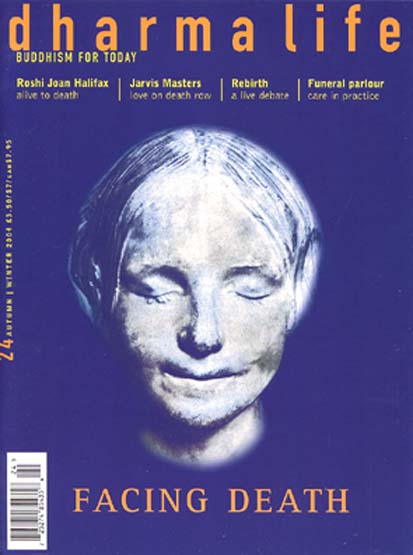Buddhist Scriptures
Edited by Donald S Lopez, Jr. Penguin 2004, £9.99 p/b
This new collection of Buddhist scriptures is an anthology of reprinted and newly translated extracts from texts that span Buddhist history. As well as excerpts from the well-known Pali Canon, there are also translations from Sanskrit, Tibetan, Chinese and Japanese. In the introduction Lopez asks, why do we need another book of Buddhist scriptures? His answer is twofold. Firstly, he seeks to redress an imbalance that has been tipped for too long in the direction of early Pali sources, and his portrayal of Buddhism in this collection aims to reveal more of the tradition as it has unfolded throughout its history. Secondly, he suggests that we need another book of Buddhist scriptures simply because there are so many Buddhist texts out there (and, indeed, one more collection is still not enough!).
Lopez's anthology works well for those past the introductory stages of interest in Buddhism who wish to take their understanding further by reading (extracts from) Buddhist texts. That said, Buddhist Scriptures should not be regarded as an overview of Buddhism, although at first glance this is what it appears to be. Lopez simply aspires to make a broader range of scriptures available to the non-language specialists, and in this he succeeds.
In the broad scope encompassed by the book, it is possible to see the history of Buddhism unfolding. Its spirit, along with its texts, practices and doctrines (in divergent and comparable forms), is unveiled as Lopez takes us on a rich voyage through a wealth of Buddhist literature. Extracts range from the tale of a murderer in the Pali Canon, through the Mulasarvastivadin Vinaya, assumptions about the status of monks and the laity, enshrining relics, Nagarjuna, The Tibetan Book of the Dead, Tsong-Kha-Pa on dependent origination, the Chinese practice of releasing animals to freedom, the Korean approach to Zen, and biographies of the Chinese patriarchs and eminent nuns. Encompassed in the scope of the book is a vision of what Buddhism is, in all its vicissitudes, but also with all its consonant applications. One is met with a sense of many and various expositions of primary principles: to dwell in compassion while abandoning worldly desires, to control the mind, to be self-abiding and self-aware, to venerate the Buddha.
My one reservation with the anthology lies in its emphasis on looking for universals and commonalities within Buddhism. In presenting and describing Buddhism, or perhaps any religious tradition with such a vast history, one needs to balance discerning universals with an acknowledgment of the socio-historical cultural conditions under which texts were produced and certain ideas and practices valued. Buddhist Scriptures perhaps errs too much on the side of the former, while holding back from a detailed exploration of the latter.
An example of this can be found in Chapter 49, 'A Lay Master of Meditation'. This is an extract from a Pali source that takes the form of a conversation between a naked ascetic and a lay disciple of the Buddha. Lopez rightly suggests that this sutta challenges assumptions about the ability of lay practitioners to achieve a high level of success in their practice. In it the lay practitioner attains the 'superhuman distinction in knowledge and vision worthy of noble ones', which was not attained by the naked ascetic. However, within the ancient Indian culture that is the context of this sutta, there are many more interesting comparisons with this text than simply an intra-Buddhist one. The ability of the layman as compared to that of the ascetic has implications for views about the means of gaining religious insight within both other 'heterodox' religious traditions of the time and within Brahmanism. The relative importance placed on the householder versus the ascetic stages of life in Brahmanism is a subject of continued debate.
Perhaps this sort of focus on context is too much to ask of such a broad anthology. Perhaps all that is necessary is to acknowledge that there is a fuller, richer picture of each text to be uncovered. As a collection of Buddhist scriptures the book moves us in the right direction, away from the ingrained over-emphasis on Pali sources, and, as such, it is a work long overdue.
Alice Collett (Manishini) is Associate Lecturer in Buddhist Studies at Cardiff University and works on Sanskrit textual studies and the social history of Buddhism



